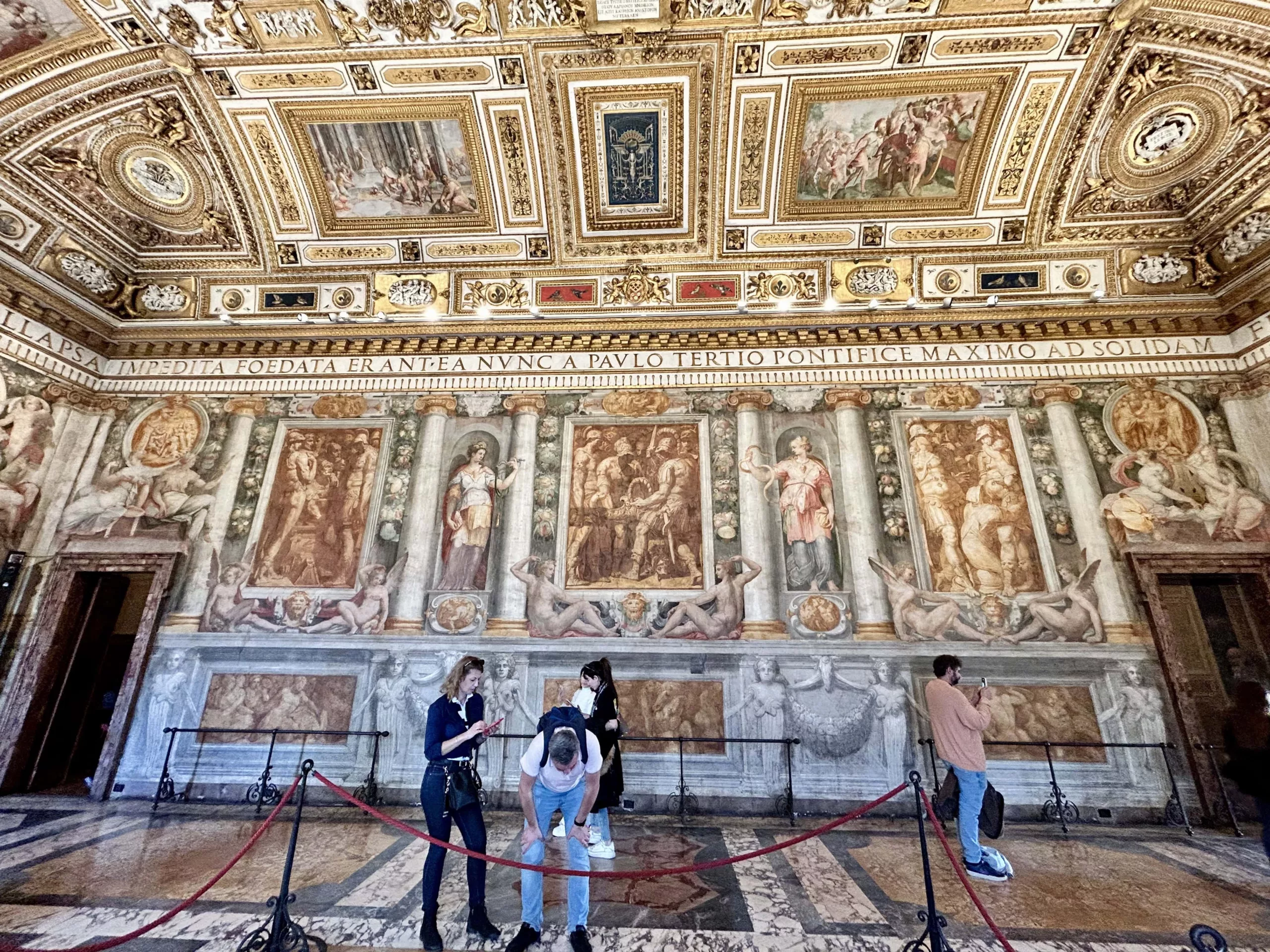
16 Jan The Sala Paolina in the papal apartments of Castel Sant’Angelo
Nestled on the right banks of the Tiber River, the imposing Castel Sant’Angelo stands as a testament to the history of Rome. Within its walls lies an exceptional treasure trove of stories and secrets, and one of the most intriguing chapters is the residence of Pope Paul III. The apartments of Paul III in Castel Sant’Angelo offer as a captivating glimpse into the opulent lifestyle of the papacy in the XVI century.
Built initially as a mausoleum (tomb) for Emperor Hadrian in the II century (139 AD), Castel Sant’Angelo has transformed over the centuries, serving various purposes from fortress to residence. It became the private residence of the popes in times of danger, and it was during the Renaissance that the Castel Sant’Angelo underwent significant change, including the construction of lavish apartments.
Alessandro Farnese, better known as Pope Paul III, had this set of rooms (appartamenti farnesiani) built in Castel Sant’Angelo (1548) and decorated by some of the best painters of his times. His pontificate was characterized by a keen interest in the arts, and culture, and a desire to leave a lasting legacy.
One of the highlights of Paul III’s apartments is the Sala Paolina, adorned with frescoes by the renowned Renaissance artist Perin del Vaga and his assistants. The room served as a space for important gatherings, receptions, and ceremonial events, reflecting the role of the pope as a spiritual leader and a political figure.
The frescoes depict scenes from the life of Alexander the Great, aligning the pope with the great conqueror in a symbolic assertion of the papal authority. Along with Alexander the Great, the paintings include the stories of Saint Paul. Alexander the Great was chosen as he had the same name as the pope before his election in 1534. At the same time, Saint Paul has the name Cardinal Farnese chose as a pope.
On the short walls, the portraits of Hadrian and the Archangel Michael face one another in a symbolic parallelism to reconcile paganism and Christianity.
Among the most significant scenes is the one where Alexander the Great saves the books of the Odyssey, which reflects the love of Pope Farnese for art and literature. The scene of Alexander crossing the Hydaspes River instead pointed to the actions undertaken by the pope to face the threat of the Turks.

